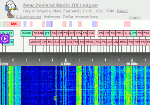LONG, HIGH AERIALS.
From the Ellesmere Guardian, Volume XLV, Issue 3174, 6 December 1927, page 6
How many of you experimenters who are always building and rebuilding your receivers into all manner of circuits, buying more valves and accessories, and generally striving to pull in more D.X. (long distance), ever pause long enough in your experimenting to reflect that by erecting a long, high aerial you are practically adding another stage of radio to your set! The distance-getting ability of a long, high aerial versus a short one may be compared with the difference between a really good head set and an insensitive one. The good head set brings in signals from the distant stations quite clearly and distinctly, while the poorly designed ones reproduce them so faintly that one has to strain the ears to find out what it is all about. And it’s the same with aerials. A long distance unsheltered aerial will bring in signals from far greater distances than a short low one can ever hope to do. Stations heard on a small aerial will come in with marked improvement as regards volume when the set is coupled to a longer, higher aerial, this simply because the aerial, being high and covering a greater area, is collecting considerably more energy thereby, resulting in more pronounced radio frequency delivery to the detector. True indeed there will be a marked difference in selectivity, but to get the long-distance stations many are willing to tolerate broader tuning, which is in no way harmful so long as your receiver is a respectable distance from the broadcasting station.



